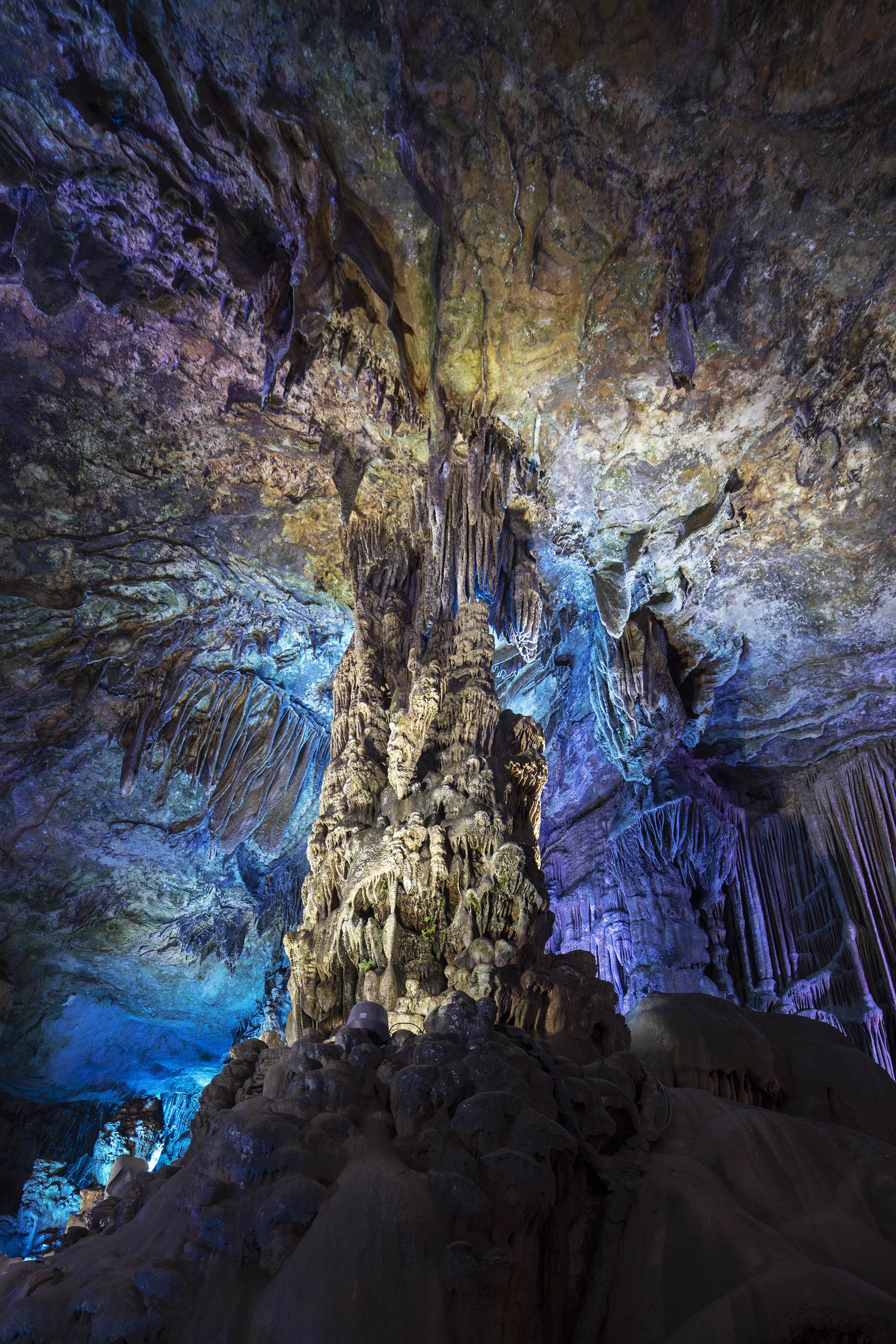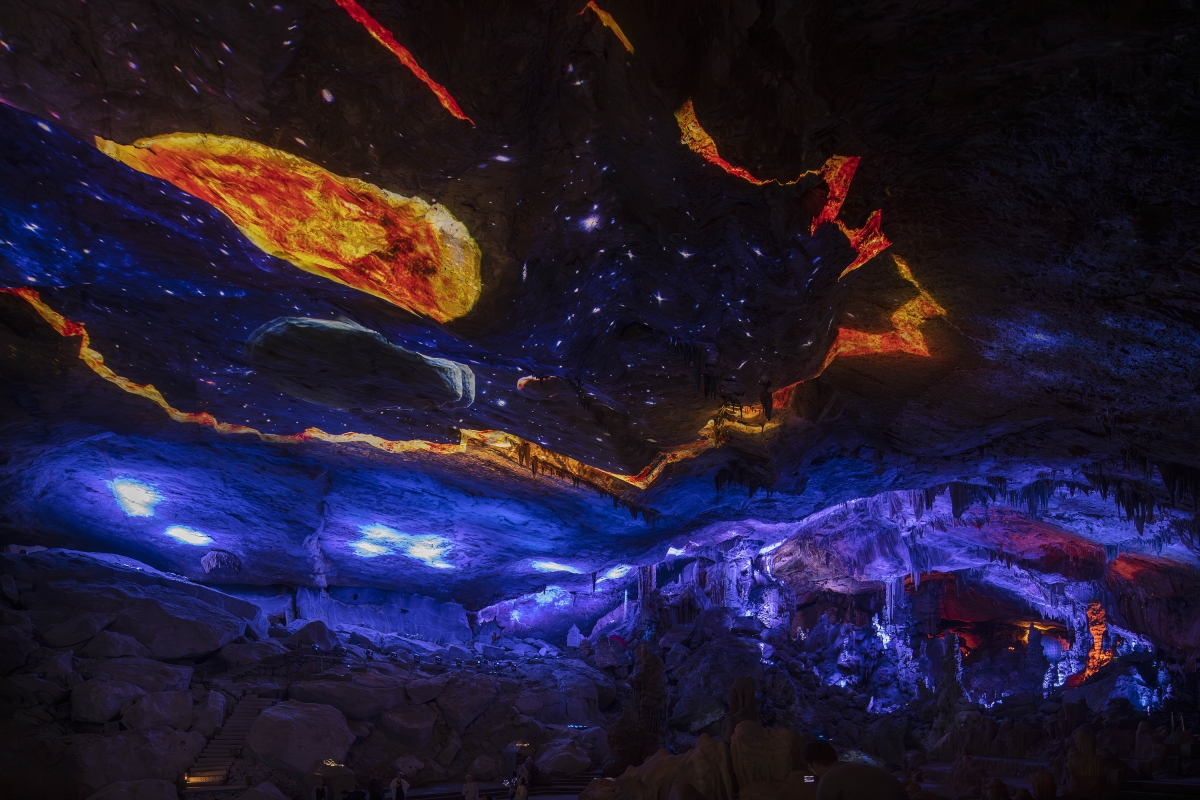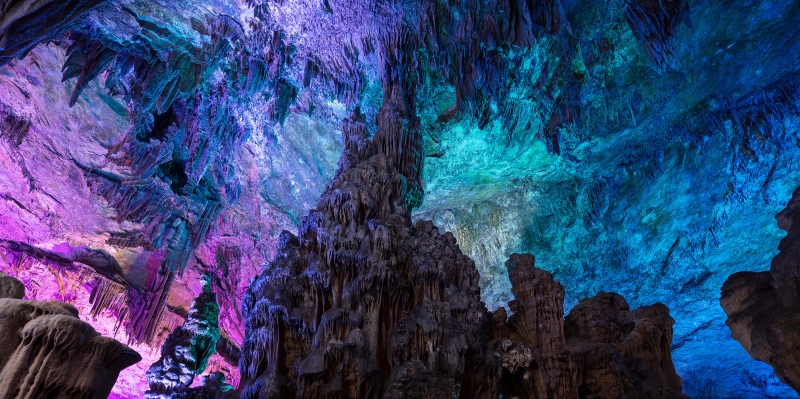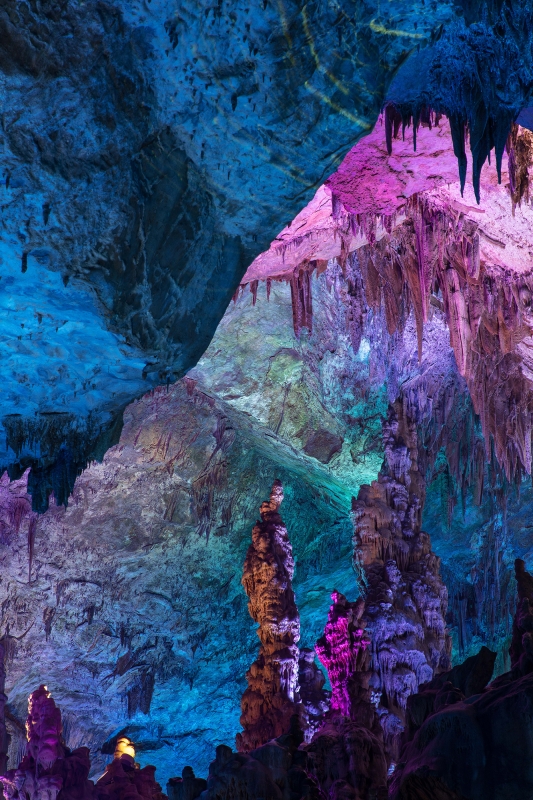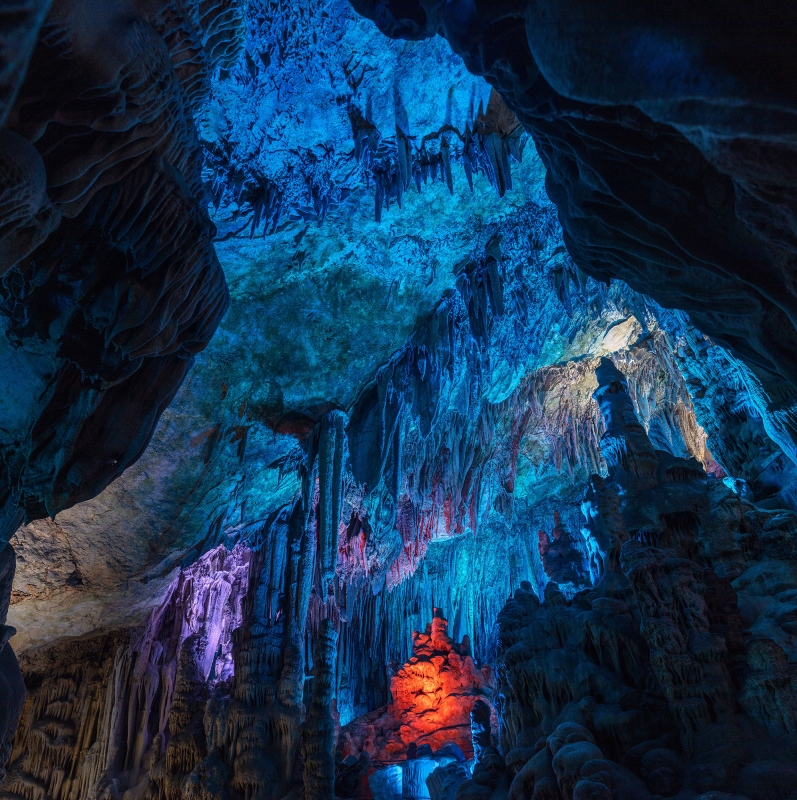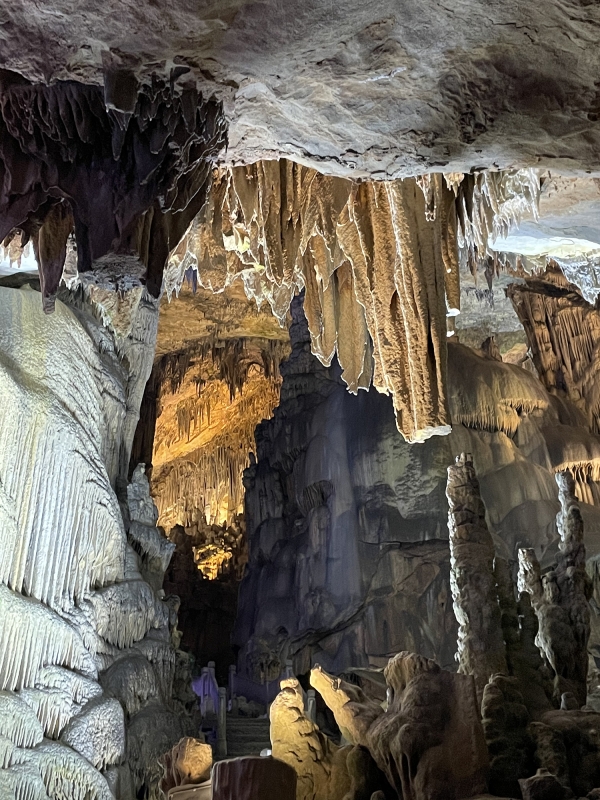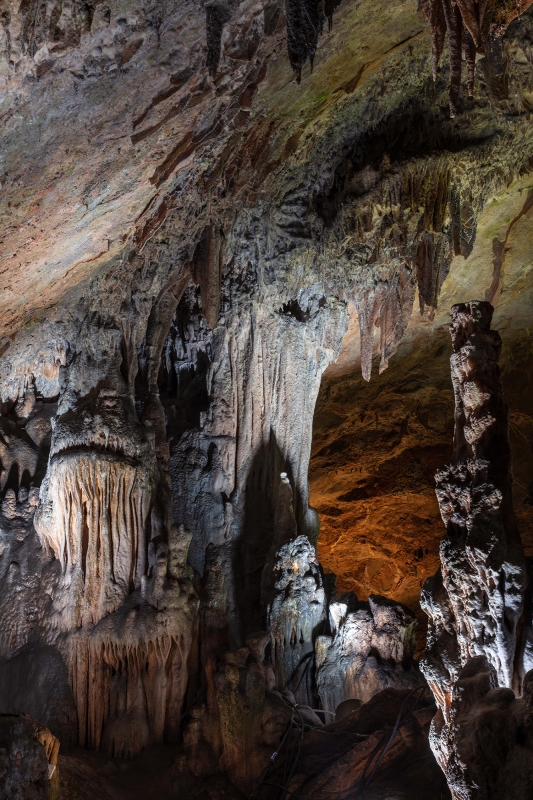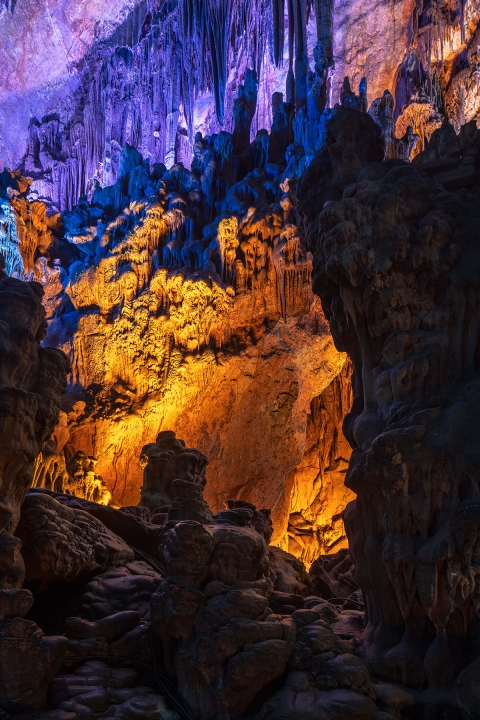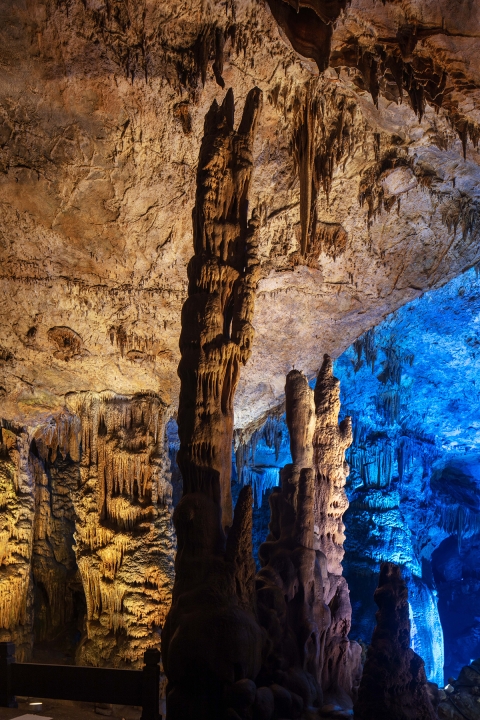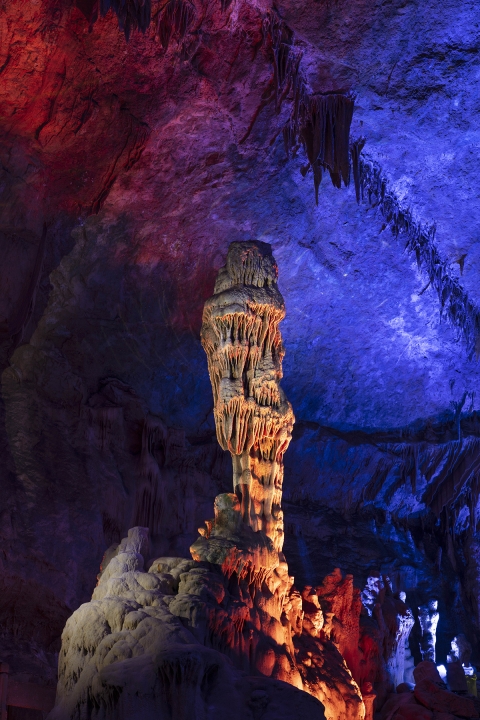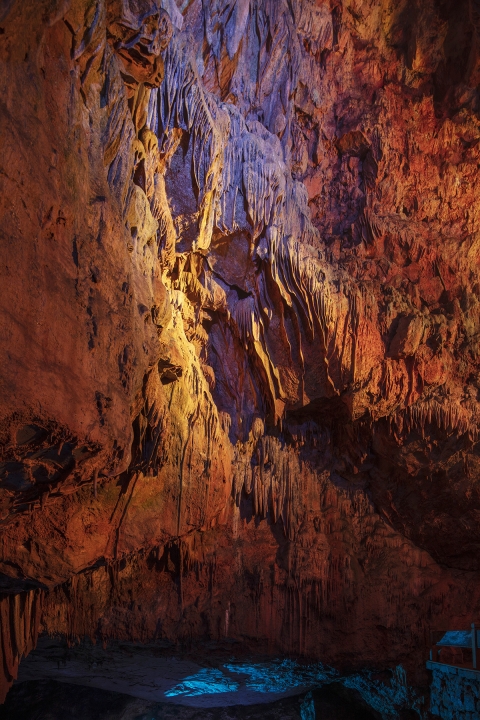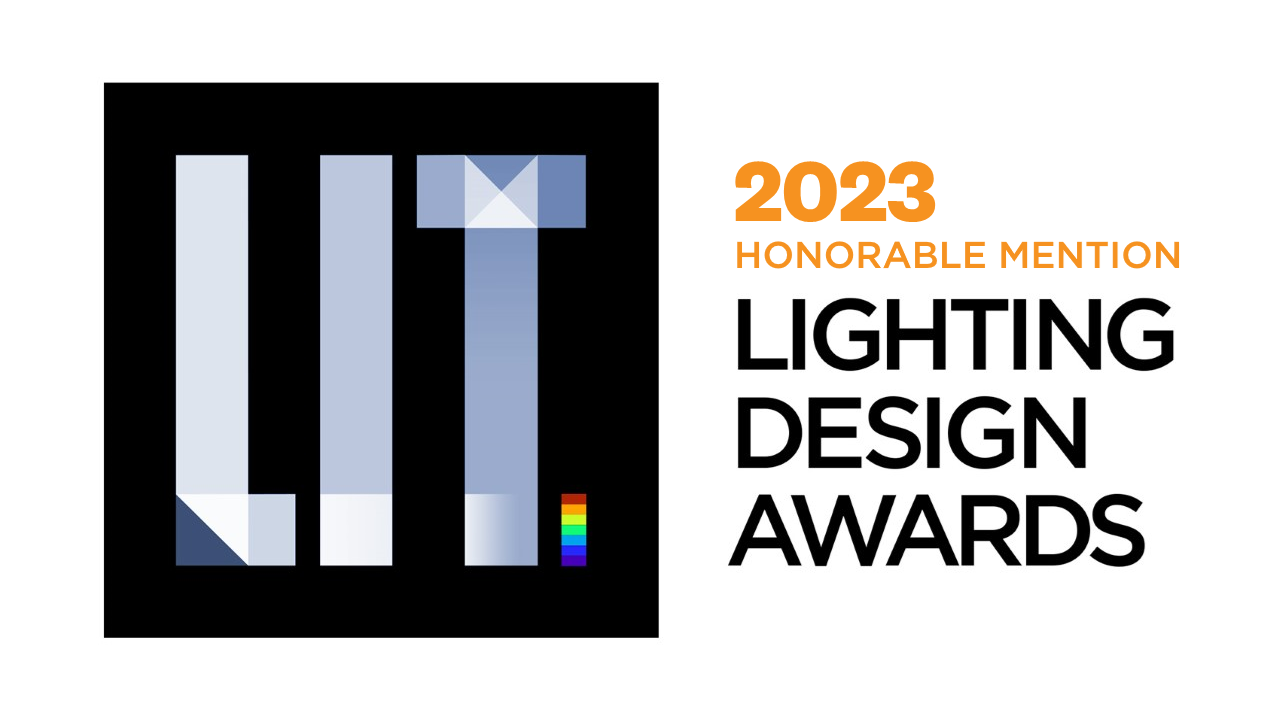Prize(s) Honorable Mentions
Company LIGHTING DESIGN INSTITUTE of UAD
Lead Designers Wang Xiaodong, Song Luoying, Dong Haoyun, Fu Dongming, Lin Luan, Feng Baile, Wu Xuhui
Client Tonglu Fuchun Tourism Development Co., Ltd.
Photo Credits LIGHTING DESIGN INSTITUTE of UAD, Jia Fang Architectural Photography Studio
Completion Date 2023/05
Project Location Hangzhou, Zhejiang Province, China
Entry Description270-million-years ago, Yaolin was a shallow sea, later transformed into a karst cave through orogeny. In 1979, it was serendipitously discovered and hailed as the "King of Chinese caves" for its intricate and awe-inspiring landscapes. However, the lighting design of the case was overly colorful as other Chinese caves.
By adhering to the principles of "restoring the authentic karst cave" and "creating a culturally rich tourism experience," the lighting design team has crafted an immersive experience themed with "Three Chapters of Symphony" by light and shadow.
Hall 1 presents a sudden opening after a deep winding passage, featuring a predominantly white color scheme to enhance the immersive experience of cave exploration, aiming to faithfully recreate the natural beauty of karst landforms in daylight.
Hall 2 showcases stalactites protruding in layers with well-proportioned order. Turquoise was adopted as the primary color combined with twinkling starlight, adding to the beauty of the spectacle.
Hall 3 is flat with a large expansive dome yet a few stalactites, so the hall is decorated with iridescent colors and gradients of low-saturated colors, creating a fantastic effect. To enhance the cultural tourism experience, the hall incorporates a naked-eye 3D lighting art showing the forming process of karst landform, helping to popularize science.
Sustainability Approach1. Low-carbon and energy-saving
a) LED lights have been installed throughout the cave to minimize energy consumption.
b) Smart control automatically turns lamps on/off and adjusts brightness based on passenger flow.
c) Multiple primary colors are used for accurate blending lighting, effectively saving energy.
2. Environmentally friendly
The growth of moss issue on stalactites due to the air humidity and illumination factors is a universal problem for karst caves. The design team came up with a creative solution to tackle it. They used 7-in-1 lamps and added filters that eliminated red and blue light wavelengths, thus inhibiting the growth of moss effectively.
3. Innovative system
Based on the three primary colors of RGB, three complementary colors (cyan, lemon, and amber) are added to balance with white and achieve a wider color gamut. With rendering index CRI>95 and R9>90, it improves

